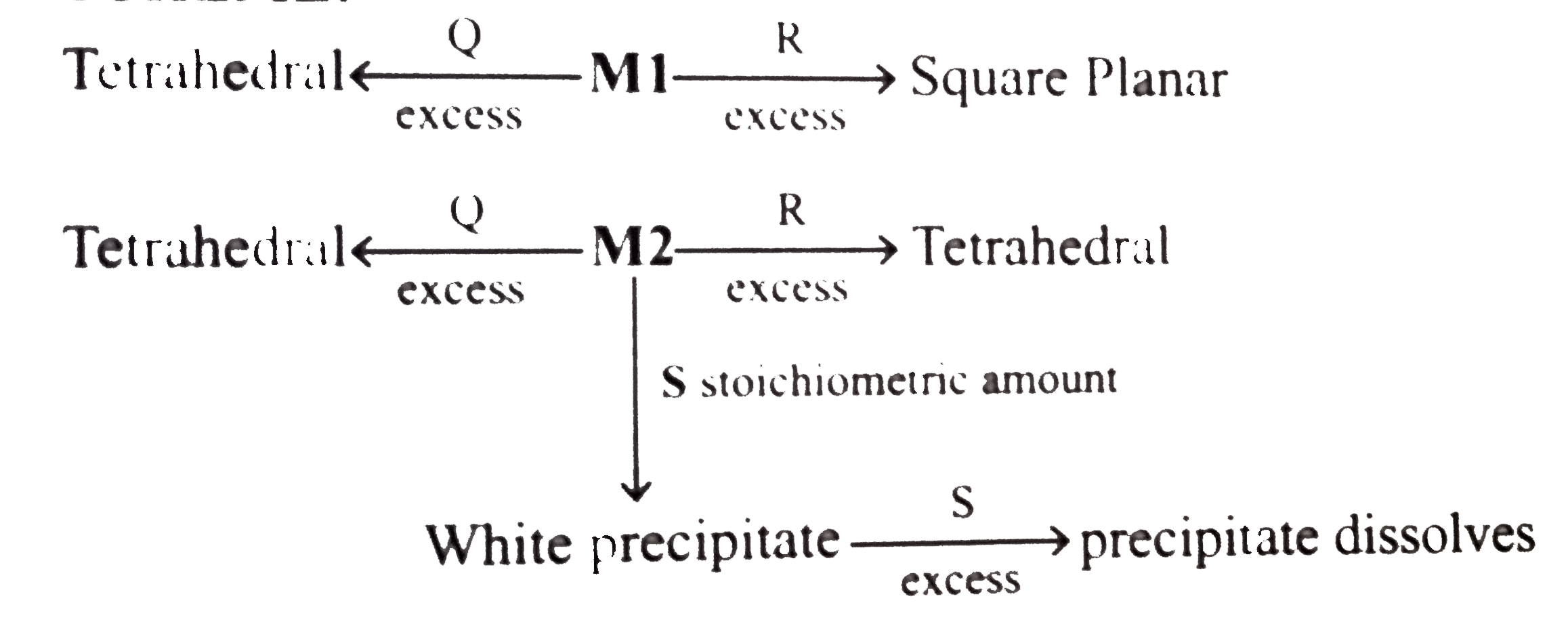A coordination complex of type (M-metal ion: X, Y-monodentate lingads), can have either a tetrahedral or a square planar geometry. The maximum number of posible isomers in these two cases are respectively:
0 and 2
2 and 1
1 and 3
3 and 2
The correct Answer is:A
Step by step video & image solution for A coordination complex of type MX_(2)Y_(2) (M-metal ion: X, Y-monodentate lingads), can have either a tetrahedral or a square planar geometry. The maximum number of posible isomers in these two cases are respectively: by Chemistry experts to help you in doubts & scoring excellent marks in Class 12 exams.
Updated on:21/07/2023Topper's Solved these Questions
- COORDINATION COMPOUNDSBook:RESONANCE ENGLISHChapter:COORDINATION COMPOUNDSExercise:Additional Problem for Self Practice (APSP) Part-III Subjected Question
Explore 7 Videos
- COORDINATION COMPOUNDSBook:RESONANCE ENGLISHChapter:COORDINATION COMPOUNDSExercise:Additional Problem for Self Practice (APSP) Part-III Only one option correct type
Explore 20 Videos
- COORDINATION COMPOUNDSBook:RESONANCE ENGLISHChapter:COORDINATION COMPOUNDSExercise:Additional Problem for Self Practice (APSP) Part-I
Explore 29 Videos
- CHEMISTRY IN EVERYDAY LIFEBook:RESONANCE ENGLISHChapter:CHEMISTRY IN EVERYDAY LIFEExercise:ORGANIC CHEMISTRY(Chemistry in every day life)
Explore 31 Videos
- D & F BLOCK ELEMENTSBook:RESONANCE ENGLISHChapter:D & F BLOCK ELEMENTSExercise:ORGANIC CHEMISTRY(Aldehydes , Ketones, Carboxylic acid)
Explore 15 Videos
Similar Questions
Nickel (Z=28) combines with a uninegative monodentate ligand X− to form a paramagnetic complex [NiX4]2−. The number of unpaired electron(s) in the nickel and geometry of this complex ion are, respectively:
View SolutionHomoleptic octahedral complexes of a metal ion 'M3+' with three monodentate ligands L1,L2 and L3 absorb wavelengths in the region of green, blue and red respectively. The increasing order of the ligand strength is :
View Solution
Knowledge Check
For the square planar complex [M(a) (b) (c ) (d)] (where M = central metal and a, b, c and d are monodentate ligands), the number of possible geometrical isomers are
AoneBtwoCthreeDfourAssertion : Tetrahedral complexes having two different types of unidentate ligands coordinated with central metal ion will show geometrical isomerism .
Reason : Geometrical isomerism arises in homoleptic complexes due to different possible geometric arrangement of the ligands .AIf both Assertion and reason are true and reason is the correct explanation of assertionBIf both assertion and reason are true but reason is not the correct explanation of assertionCIf assertion is true but reason is falseDif both assertion and reason are false
Homoleptic octahedral complexes of a metal ion 'M3+' with three monodentate ligands L1,L2 and L3 absorb wavelengths in the region of green, blue and red respectively. The increasing order of the ligand strength is :
View SolutionThe maximum number of electrons that can be accomoddated in dx2−y2 orbital is
View SolutionThe maximum number of electrons that can be accomoddated in dx2−y2 orbital is
View SolutionVelence bond theroy describes the bonding in complexs in terms of coordinate -covalent bond resulting from overlap filled ligand orbitals with vacant metal hybrid orbitals This theory explains magnetic behaviour and geometrical shape of coordination compounds Magnetic moment of a complex compound can be determined experimentally and theoretically by using spin only formula
Magnetic moment √n(n+2)BM (where n = No. unpaired electrons) .
Ni2+ cation combines with a uninegative monodentate ligand XΘ to form paramagnetic complex [NiCI4]2− The number of unpaired electrons(s) in central metal cation and geometry of this complex respectively are
(a) One,tetrahedral
(b) Two,tetrahedral
(c ) One,square planar
(d) Two, square planar .
View SolutionAn aqueous solution of metal ion MI reacts separately with reagents Q and R in excess to give tetrahedral and square planar complexes, respectively An aqueous solution of another metal ion M2 always forms tetrahedral complexs with theses reagents. Aqueous solution of M2 on reaction with reagent S gives white precipitate which dissolves in excess of S The reactions are summarised in the scheme given below: SCHEME :

What is M2
View SolutionA spinal is an important class of oxides consisting of two types of metal ions with oxides ions arranged in CCP layer. The normal spinal has one-eighth of the tetrahedral holes occupied by one type of metal ion and one-half of the octahedral holes occupied by another type of metal ion. such a spinal is formed by Zn2+,Al3+andO2− in the tetrahedral holes. if formula of the compound is ZnxAlyOz, then find the value of (x+y+z) ?
View Solution